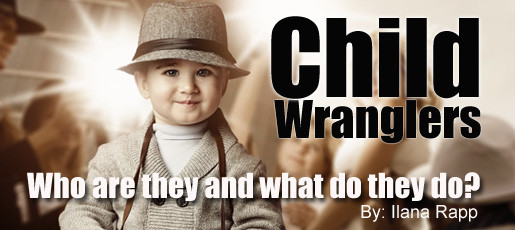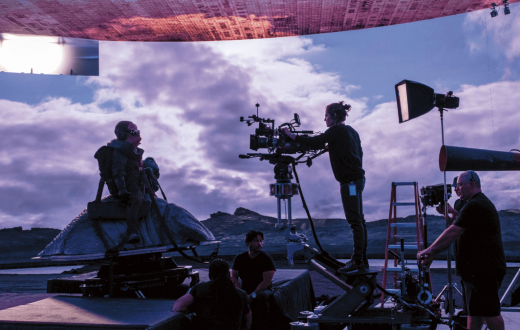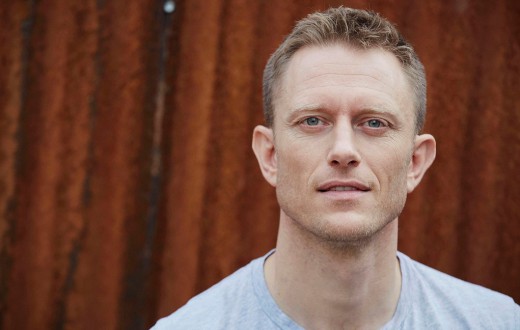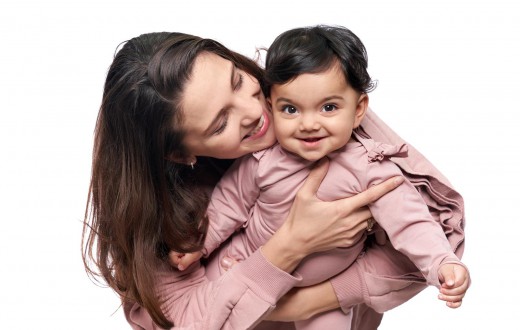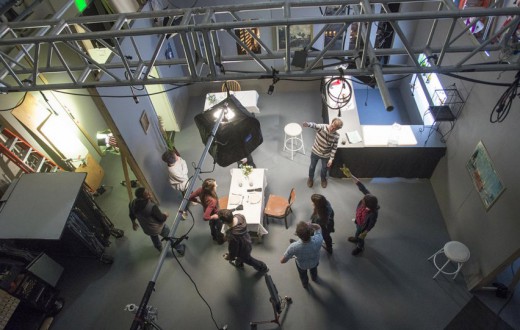The experience of children on set, whether it’s for print, film or TV, can be very overwhelming for the children, parents / guardians and crew.
Child wranglers, also known as baby wranglers, are there to help bring a happy and healthy medium between the children and production.
Before we meet wranglers Joyce Whalen, Meryl Salzinger and Melanie Sawyer, I want to share a quick story about a television series episode my toddler twins did where there was no wrangler.
The production was very high end and classy and the crew was as friendly as could be but there was no wrangler. The scene required a bunch of children in a park playing on a jungle gym. As with most parks, there are different sized jungle gyms for different aged children. The production put all of the kids, ages 4 years through 10 years on the same gym. The older kids were running and climbing at a pace that the toddlers couldn’t keep up with and one of my children was knocked down.
If the production would have hired a wrangler, they would have been informed that the children should be playing on the age-appropriate jungle gyms.
INTRODUCTION BY JOYCE WHALEN, BABY WRANGLER
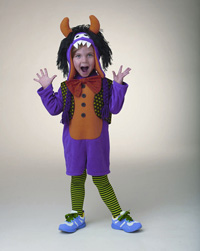
Wranglers help the director capture the perfect expression! Photo for Simplicity Patterns.
I have been a wrangler for over 25 years. I started in the photo industry as an Assistant Publicity Director and after having children went freelance. I started working on photo shoots as a stylist. Back then, the jobs were not separate and you did the job of a wrangler, stylist and producer. After going digital, you could shoot twice as many shots in a day so it made sense to separate the responsibilities.
It pays to have a wrangler on set because they can direct the children to do what is expected of them in a friendly manor. We keep them happy and feel comfortable in front of a group of strangers. We can keep them focused while the photographer just concentrates on what he has to get done. Sometimes when the kids have to shoot winter in the middle of summer and vise versa, it is our job to keep them comfortable. Since we shoot months before the season, we have to travel to Florida in the middle of winter to shoot spring and summer. The client usually flies you down and pays for your hotel.
Sometimes a child needs to have their parent within eye sight to feel comfortable whatever it takes to get the job done as long as the parents don’t interfere with getting the shot. The wrangler usually knows what the client is trying to achieve and in what direction they want the children to look.
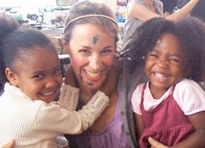
Meryl Salzinger talks about working with differently-abled children.
How did you first hear about baby wrangling?
I heard about baby wrangling during my first photo job at Macmillan/Mcgraw-Hill. I was a photo assistant for 5 years. There I managed the in-house studio and did all the production as well as wrangling the kids on shoots. I was doing the technical stuff because I was the photo assistant and I have a background in developmental psychology from my parents, who are both developmental psychologists. I also took classes in college.
After Macmillan/Mcgraw-Hill, I went on to be a studio manager at Julie Gang’s Studio in New York where I met wrangler extraordinaire, Joyce Whalen.
Is baby wrangling a freelance position or do some companies have full-time wranglers?
As far as I know, it is a freelance position.
What’s the difference when wrangling infants vs. toddlers vs. teens?
You do always have to be aware of what is age-appropriate for each child and some knowledge of developmental psychology is very helpful. But no matter the age, you always have to think about how what you are doing looks like from the perspective of the child. Whatever their age, the child must be made comfortable enough to show you their best selves. When a child is being shy on set, many parents will say, ‘She always talks and smiles at home!’ I always try to assure them that it is to be expected that their child needs to find their bearings in the foreign environment of a photo shoot before they can act as they naturally would. This is true of kids from infancy to teenagers – if you have the patience to wait you will be rewarded by the great energy that only kids of all ages can bring to a shoot.
One difference between wrangling younger and older kids is that a quiet set is required for the younger babies. This allows the wrangler to be quiet and subtle with the baby which means that the baby can more easily follow directions. Also, the fewer people on set the better; everything is new to a baby and so they are easily distracted and also possibly frightened by unfamiliar people staring at them. It is SOMETIMES better to not have the parents in sight – but this is not a hard-and-fast rule because sometimes babies just need to be able to look up, see their mom, and think, ‘Okay, mom is here, she says all this is Okay. Now what did you want me to do?’
With a quiet set the baby can feel comfortable enough to give us her best stuff. Also, it is important to show a baby that their parent/guardian approves of you; small babies will literally look to their mother’s faces sometimes to see if she is laughing before they do. It’s pretty funny to see the look on their face that says ‘Is that funny, Mom? Oh, okay, she’s laughing so I guess I can too!’ :-)))
I think an important thing to remember with older kids is that they might feel self conscious or that they are going to look foolish. The best thing for a wrangler to do in this situation is to be the bigger fool; as a wrangler you’ve got to leave your pride at the door :-)). Also, for older kids there is a place for serious talk if a child is really misbehaving. Sometime you need to tell them that if they cannot listen and behave that they can not be in the shoot and ask them if that is what they want. Any child at a shoot who does not want to be there is not good for the shoot, or most importantly, for the child. Finally, the most important thing that you can show a child on set is, as always with a child, loving care. This not only helps them, but it truly brightens your day to connect in that way with children.
What’s it like working with differently-abled children?
I have worked with differently-abled children and it has been a great experience. One that I learned so much from and hope to do again.
For the autistic children, I treat them like any other kid. You have to go to where they are and where they’re comprehension is. I worked with the Toys R Us ‘differently-abled’ catalog for a number of years. You have to figure out what their abilities are and what it is that helps them follow direction and work at that level. You have to think about their seeing and hearing what you’re doing, which is different than what you perceive.
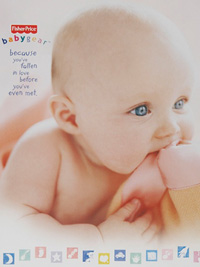
Visit Meryl Salzinger’s Wrangling website
Is there ever any fear that a child will just not cooperate? How do you handle that?
You have to see if there is any easy answer as to why they are not cooperating – they need a nap, food, to see their mom for a second, a break, someone on set is making them uncomfortable. All of these things are easily solved. Sometimes just taking them somewhere else for a minute and bringing them back into the set with less people around helps. Some babies just really need their moms around so you might have to work around that. I’ve done head and shoulders portraits of babies with the mother lying down on set and the baby sitting on the mother’s belly. Often, if you can just make the environment calm and explain exactly what you need to an older child, you can make it work. If not, then you just have to be prepared to use another child. Children are not just small sized adults and sometimes they cannot be asked to do what they do not want to do. In that case I think it is important to tell them that it is okay and that maybe they will do it another time. They are, after all, kids and maybe they just need to go home and do kids things that day.
What’s the difference between print and tape?
A television job has a village of people on set. There could be 10 times the amount of people vs. print. It’s a more hierarchical setup. There’s a director present but you may
never speak to the director. The person who the wrangler talks to is the Assistant Director (AD). What’s great about a television shoot is that the AD is really responsible for the whole tenor and mood for the set. If they know what they are doing, they will keep that set calm and appropriate for when you bring the baby on set. The AD will say ‘Baby is coming to set. Please do not make eye contact with the baby.’ That way everyone is calm and the baby feels good. It’s more structured but it really works. The AD’s are saints. They handle everything.
Anything else you want to add?
You need somebody whose only job is to be the child’s person. The kid needs to know there is a person there whom they can trust. You’re doing something different as a photographer and a director. You’re being technical and being creative in a different way.
The child feels comfortable knowing they can go to one person if they need a juice box or have to go the bathroom. They want to feel like that’s their person. There are too many strangers and a lot going on. If there’s somebody there that always remembers them, they feel more comfortable.
You need a mixture of child psychology, unbelievable patience, a love of children and a knowledge of photography and photo shoots and how that works. My job as a baby wrangler is one that I love for its constant surprises and moments of wonder. Nevermind that there is not another job in the world that keeps you laughing and loved like this one. The talents required, like being able to do three types of dog barks and two kinds of monkey calls, as well as being able to deftly use a bubble machine (without getting suds on the camera lens), sing a crying baby to sleep or change their tears into belly laughs, or dance like crazy to the newest tween boy band while wearing a princess tiara and a pig nose on my face, help to keep everything else in life in perspective. My father always told me to find a job that I wanted to go to every day and I am so lucky that I have been doing that for many years.
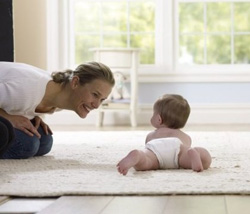
Visit Melanie Sawyer’s Wrangling Website
What brought you to New York?
“Technically I consider myself to be a Brooklyn girl! I have a wonderful community here of Italian Americans which I love for so many reasons — their sense of pride in their community, family, tradition and respect are aspects I want to live around and bring my songs, aged 12 and 9, up in. I haven’t moved more than two miles away from the beautiful Williamsburg Bridge since I got here 14 years ago. New York is a wonderful city. The diversity of cultures and the fact that if you travel four hours in any direction, you are going to find a completely different landscape, climate and experience. It’s pretty awesome! I travel a lot to be with my husband, Todd, to Gloucester, MA, and I adore the people, fishing, woods, food and hospitality that the locals have to especially offer there.”
When wrangling, how do you deal with children who have separation anxiety?
“Children with separation anxiety or who are modeling for the first time are especially important to me when I’m working on a set. It is vital to gain their trust and take away as much of their fear of the unknown as possible. I don’t call this working when I’m with kids; I call it playing. I change it from an unknown environment to words and phrases they are familiar with at school or in a play group, and they are immediately more receptive to gentle direction. If at all possible, I will also bring a parent on the set, too. The child now understands that we are going to play, with a parent close at hand and then I add if they are a good listener then they also get prizes or rewards! This further increases the child’s curiosity about a fun environment and ensures more chances of success. I always speak with the parents before I reward as sometimes C.A.N.D.Y is not eaten in that particular family or the child has allergies. Stickers are also a wonderful alternative as a prize, too. The number of little boys’ faces which have lit up when they get to choose between Thomas or a Monster truck sticker set is a win for me in itself! Being keenly versed in the language of Pokemon, Thomas, Rainbow Brite and Dora the Explorer has also won me a few brownie points on the kids’ appreciation scale in sticky moments, too.
For a child who is on set but is unsure of how to model, I think the MOST fun game to play is the opposites game. I look at them straight in the eyes and say in a mock, stern voice, ‘Definitely DO NOT smile (or it will make me sneeze, make me tickle, make me jump’) … nine times out of 10 they mischievously do. I am of course ‘horrified’ and ask them, beg them, not to do it again (to give them a power of control) and they repeat the action repetitively which increases their smiles, and so on. It’s hilarious and we all have a great time  THAT above all is the most important thing as it will lessen any fear they have when it comes to their next shoot.”
THAT above all is the most important thing as it will lessen any fear they have when it comes to their next shoot.”
Is there a different technique you use when working with first time models vs. more experienced models?
“Even with more experienced models, it is still important to have fun! If a child is truly enjoying himself there is a very different light in his eyes as compared to a ‘professional’ smile. A simple innocent twirl goes a million miles further in my books as opposed to hands on hips with attitude! If I’m working with children then that’s how they should appear! Older models in their late teens obviously are a little more sophisticated but I believe we all need to laugh now and again.  “
“
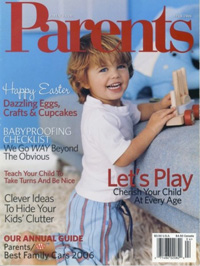
Photographer Shannon Greer for Parents Magazine
Has being versed in languages such as English, French and German helped you on any jobs? How so?
“Absolutely!! On a set you have to think FAST on your feet. I am given some of the most beautiful toddlers and babies who are only used to maybe hearing French, Russian or Chinese in their normal environment. They arrive at the shoot with a family member who, if I’m lucky, can speak both languages — and at that point, quick learning of simple phrases and repetition are completely vital to make a child comfortable on set as fast as possible. Tone and body movements are also very important. For the Parents magazine cover pictured, I wrangled completely in French and I think the results speak for themselves.”
Anything else you want to add?
“For new mums and dads on the scene, I want to offer the advice of taking nail varnish off the night before and if you can remove pierced earrings, please do so. It can be upsetting for your child so it’s best not to do it just before their shot. Sometimes there is a wait for your time on set, so it is always wise to bring favorite toys or books and crayons and a snack. Sugary food or drinks before your child’s shoot are setting them up to NOT have the best experience they could have. Chocolate milk, soda, diet soda or candy treats can make your child hyperactive and less able to take direction.
If I wanted to say anything else to the parents of children who are in this industry, it is to be proud of your child. They are incredible and very precious and as a wrangler, I will make their experience as fun as possible and watch them grow up year by year with pride.”

